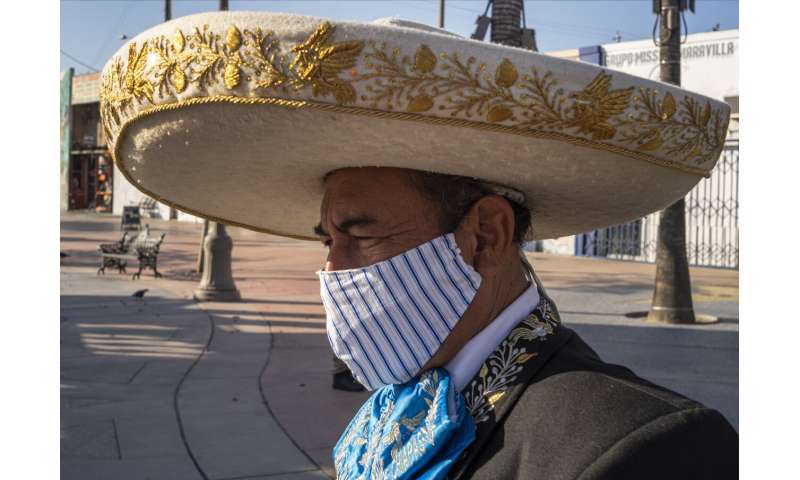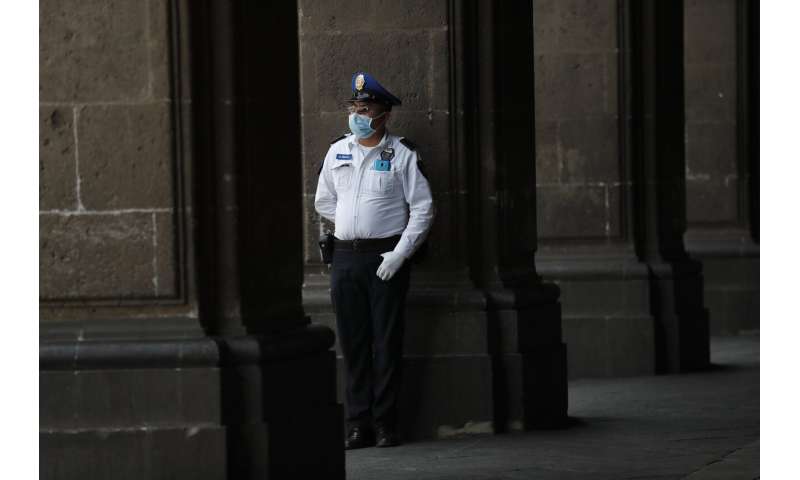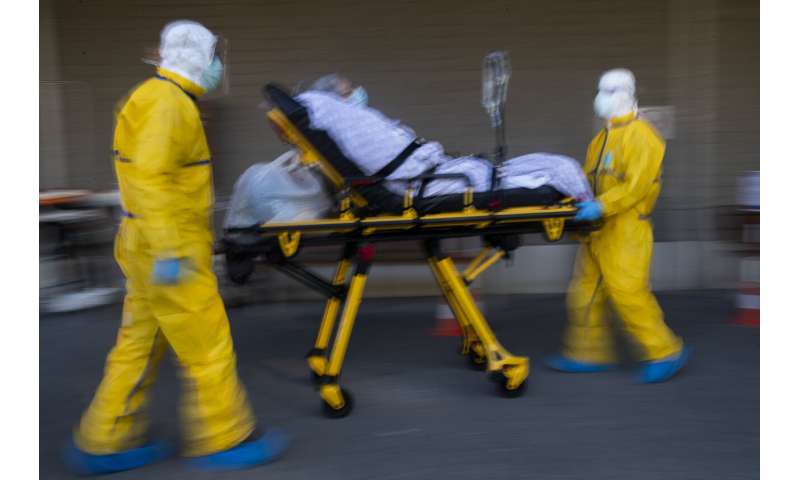
The worldwide race to protect people against unwitting coronavirus carriers intensified Thursday, pitting governments against each other in the race to buy protective gear and prompting new questions about who should wear masks, get temperature checks or even be permitted to go outside.
In the Chinese city of Wuhan, where the pandemic began in December, a green symbol on their smartphones dictates the movements of residents. Green is the “health code” that says a user is symptom-free and it’s required to board a subway, check into a hotel or enter the central city of 11 million. Serious travel restrictions still exist for those who have yellow or red symbols.
In northern Italy, the country with the most virus deaths in the world at over 13,000, guards armed with thermometer guns decide who can enter supermarkets. In Los Angeles, the mayor has recommended that the city’s 4 million people wear masks.
And a top health official in France’s hard-hit eastern region said Americans swooped in at a Chinese airport to spirit away a planeload of masks that France had already ordered by.
“On the tarmac, the Americans arrive, take out cash and pay three or four times more for our orders, so we really have to fight,” Jean Rottner, an emergency room doctor in Mulhouse told RTL radio.
A study by researchers in Singapore on Wednesday estimated that around 10% of new infections may be sparked by people who carry the virus but have not yet suffered its flu-like symptoms.

In response, the U.S. Centers for Disease Control and Prevention changed how it defined the risks of infection, saying essentially that anyone may be a carrier, whether they have symptoms or not. It is yet to change its guidance against having everyone wearing masks.
But from New York to Los Angeles, U.S. officials warned that the worst is ahead.
“How does it end? And people want answers,” New York Gov. Andrew Cuomo said. “I want answers. The answer is nobody knows for sure.”
New York state’s coronavirus death toll doubled in 72 hours to more than 1,900. Cuomo has already complained that U.S. states are competing against each other for protective gear and breathing machines, or being outbid by the federal government.
President Donald Trump acknowledged that the federal stockpile is nearly depleted of personal protective equipment used by doctors and nurses.

“We’re going to have a couple of weeks, starting pretty much now, but especially a few days from now, that are going to be horrific,” he said.
Los Angeles Mayor Eric Garcetti said even a “tucked-in bandanna” could slow the spread of the virus and remind people to keep their distance.
“I know it will look surreal,” he said, donning a mask. “We’re going to have to get used to seeing each other like this.”
In Greece, authorities placed an entire refugee camp under quarantine Thursday after discovering that a third of the 63 contacts of an infected woman tested positive for the virus—and none showed symptoms.
Altogether, close to 940,000 people around the world have contracted the virus, according to a tally by Johns Hopkins University. More than 47,000 have died from the virus and another 195,000 have recovered.

The real figures are believed to be much higher because of testing shortages, differences in counting the dead and large numbers of mild cases that have gone unreported. Critics say some governments have been deliberately under-reporting cases in order to avoid public criticism.
As hot spots flared in New Orleans and Southern California, the nation’s biggest city, New York, was the hardest hit of them all, with bodies loaded onto refrigerated morgue trucks by forklifts outside overwhelmed hospitals.
“It’s like a battlefield behind your home,” said 33-year-old Emma Sorza, who could hear the sirens from the swamped Elmhurst Hospital in Queens.
Cuomo said projections suggest the crisis in New York will peak at the end of April, with a high death rate continuing through July.
For most people, the coronavirus causes mild or moderate symptoms, such as fever and cough. But for others, especially older adults and people with health problems, it can cause severe symptoms like pneumonia and lead to death.

Asian stocks meandered Thursday after a White House warning that as many as 240,000 Americans might die in the pandemic sent Wall Street tumbling. The Dow Jones Industrial Average lost more than 970 points, or over 4%.
Many countries are now modeling their response to the virus in part after China, which in January closed off an entire province of over 70 million people. The government says the measures have been a success and reports that nearly all new cases of the virus have been imported from abroad.
People in Wuhan, once the epicenter of the crisis, are starting to return to work, tracked by a smartphone app that shows if they are symptom free.
Walking into a subway station Wednesday, Wu Shenghong, a manager for a clothing manufacturer, used her phone to scan a barcode on a poster that triggered her app. A green code and part of her identity card number appeared on the screen. A guard wearing a mask and goggles waved her through.














If the code had been red, that would tell the guard that Wu was confirmed to be infected or had a fever or other symptoms and was awaiting a diagnosis. A yellow code would mean she had contact with an infected person but hadn’t finished a two-week quarantine, meaning she should be in a hospital or quarantined.
In Europe, the strains facing some of the world’s best health care systems has been aggravated by hospital budget cuts over the past decade in Italy, Spain, France and Britain. They have called in medical students, retired doctors and even laid-off flight attendants with first aid training to help their country’s overstressed medical workers.
Source: Read Full Article
